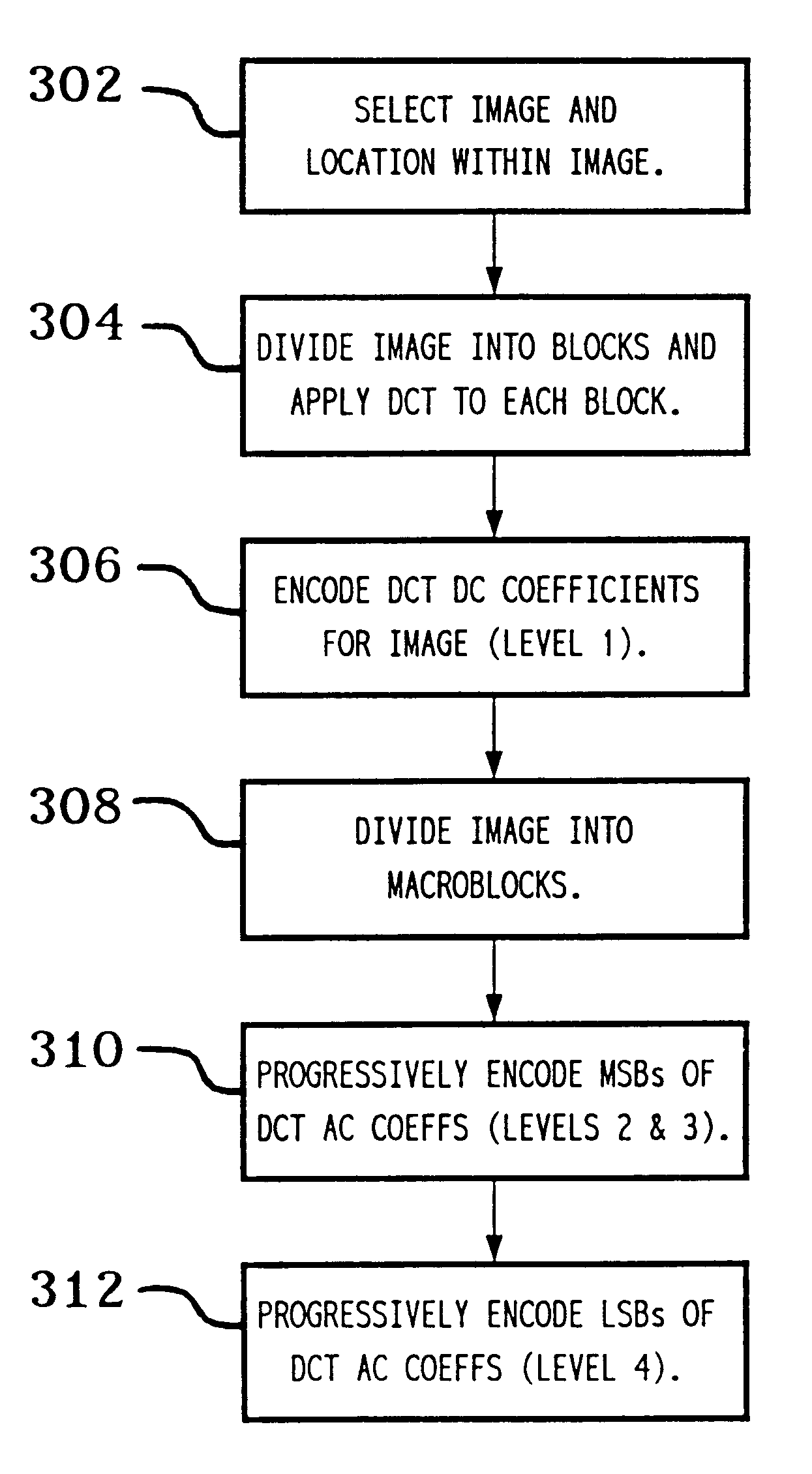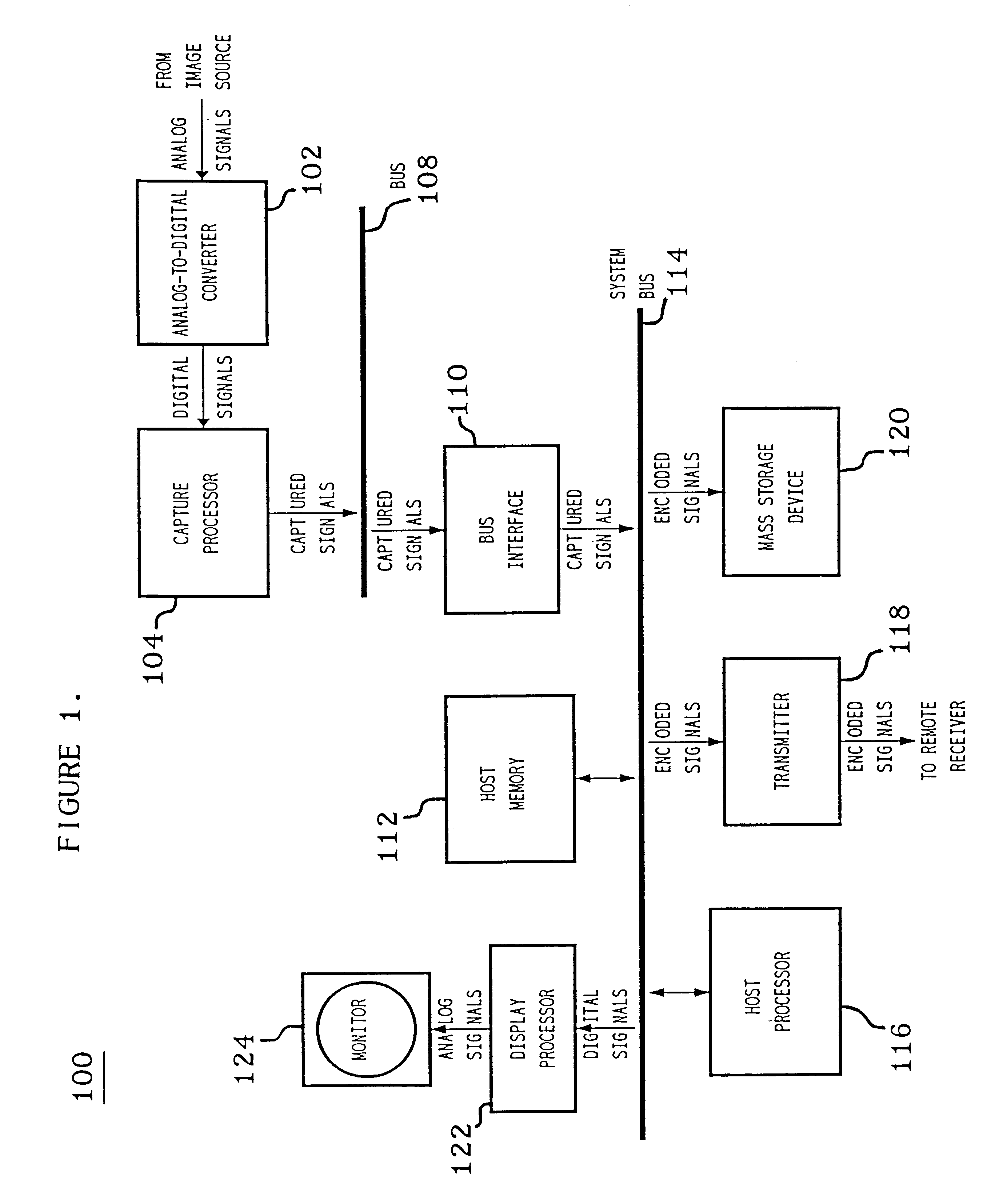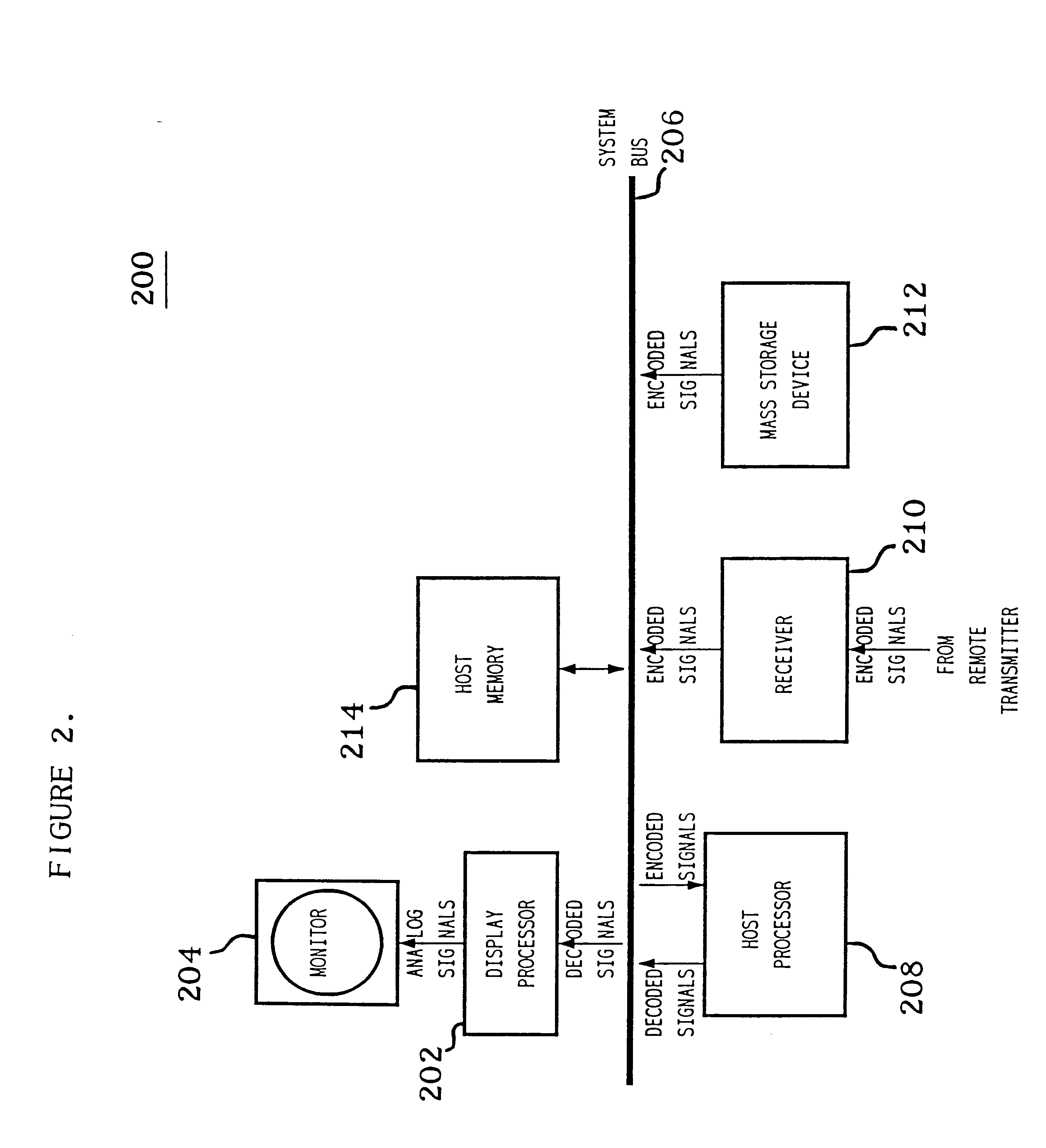Processing image signals using spatial decomposition
a spatial decomposition and image signal technology, applied in the field of signal processing, can solve the problems of proving computationally intensive and therefore time-consuming, disturbing the remote viewer,
- Summary
- Abstract
- Description
- Claims
- Application Information
AI Technical Summary
Problems solved by technology
Method used
Image
Examples
Embodiment Construction
)
The present invention is directed to the encoding and decoding of image signals. The image signals are encoded for progressive transmission such that a receiver may decode the encoded signals as they are received and display a coarse image before receiving all of the encoded signals. As more encoded signals are received and decoded, the coarse image is repeatedly updated until a full-resolution image is displayed. The image is also encoded with a spatial progression, whereby the displayed image is updated in a spatial pattern that is based on one or more selected locations within the image.
System Hardware
Referring now to FIG. 1, there is shown a computer-based encoding system 100 for encoding image signals, according to a preferred embodiment of the present invention. Analog-to-digital (A / D) converter 102 of encoding system 100 receives analog image signals from an image source. The image source may be any suitable source of analog image signals such as a still or video camera or V...
PUM
 Login to View More
Login to View More Abstract
Description
Claims
Application Information
 Login to View More
Login to View More - R&D
- Intellectual Property
- Life Sciences
- Materials
- Tech Scout
- Unparalleled Data Quality
- Higher Quality Content
- 60% Fewer Hallucinations
Browse by: Latest US Patents, China's latest patents, Technical Efficacy Thesaurus, Application Domain, Technology Topic, Popular Technical Reports.
© 2025 PatSnap. All rights reserved.Legal|Privacy policy|Modern Slavery Act Transparency Statement|Sitemap|About US| Contact US: help@patsnap.com



